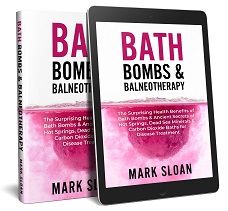Top 10 Proven Benefits of Red Light Therapy

You may have heard of infrared or red light therapy, but are you aware that it can help your body heal from virtually any disease or condition?
Infrared and red light therapies are so incredibly beneficial for so many diseases and conditions because unlike modern medicine which aims to treat symptoms, light therapy remedies the root cause of diseases and health conditions.
Before we get to the top 10 benefits of infrared and red light therapy, here’s a brief introduction to what they are and their differences.
TABLE OF CONTENTS
What is red light?
Red light is a part of the visible spectrum of radiation emitted by the sun, which includes red, orange, yellow, green, blue and purple.
What is infrared light?
Infrared light exists next to red light on the spectrum because it has a slightly longer wavelength and is actually invisible to the human eye.
Infrared vs Red Light Therapy
The beneficial effects of infrared an red light on cell function are very similar, the main difference being that red light doesn’t penetrate the body as deeply as infrared light, so for most uses, infrared will be the ideal.
Red light wavelength: 620-700nm
Infrared light wavelength: 700-900nm.
Let’s get right to the good stuff and showcase this modern miracle treatment so you can see what it can do for your health and begin experiencing the benefits right away.
Here are the top 10 amazing health benefits of red light therapy:
#10. Accelerate Wound Healing
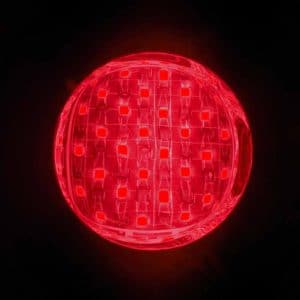 Whether it’s from physical activity or chemical pollutants in our food and environment, we all sustain injuries regularly. Anything that can help accelerate the body’s healing process can free up resources and allow it to focus on maintaining optimal health rather than the healing itself.
Whether it’s from physical activity or chemical pollutants in our food and environment, we all sustain injuries regularly. Anything that can help accelerate the body’s healing process can free up resources and allow it to focus on maintaining optimal health rather than the healing itself.
Dr. Harry Whelan, professor of pediatric neurology and director of hyperbaric medicine at the Medical College of Wisconsin has been study red light in cell cultures and on humans for decades. His work in the laboratory has shown that skin and muscle cells grown in cultures and exposed to LED infrared light grow 150-200% faster than control cultures not stimulated by the light.1
Working with Naval doctors in Norfolk, Virginia and San Diego California to treat soldiers injured in training, Dr. Whelan and his team found that soldiers with musculoskeletal training injuries who were treated with the light-emitting diodes improved by 40%.1
In 2000, Dr. Whelan concluded, “The near-infrared light emitted by these LEDs seems to be perfect for increasing energy inside cells. This means whether you’re on Earth in a hospital, working in a submarine under the sea or on your way to Mars inside a spaceship, the LEDs boost energy to the cells and accelerate healing.”1
There are literally dozens of other studies evidencing the powerful wound-healing benefits of red light.2,3
For example, in 2014, a group of scientists from three universities in Brazil conducted a scientific review of the effects of red light on wound healing. After studying a total of 68 studies, most of which were conducted on animals using wavelengths ranged from 632.8 and 830 nm, the study concluded “…phototherapy, either by LASER or LED, is an effective therapeutic modality to promote healing of skin wounds.”3
#9. Increase Bone Density
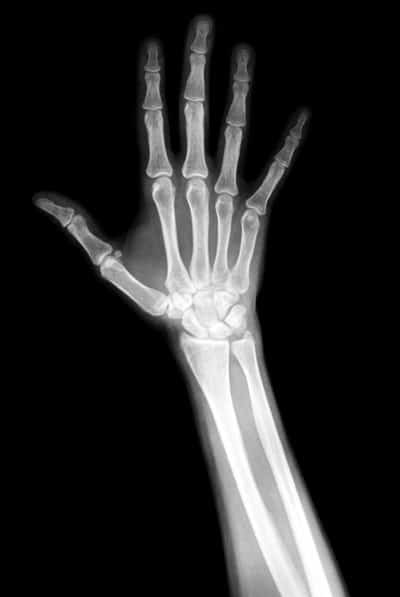 Bone density and the ability of the body to build new bone is important for people recovering from injuries. It’s also important for all of us as we age since our bones tend to progressively become weaker in time, increasing our risk of fractures. The bone-healing benefits of red and infrared light are very well established and have been demonstrated in many laboratory studies.4,5,6,7
Bone density and the ability of the body to build new bone is important for people recovering from injuries. It’s also important for all of us as we age since our bones tend to progressively become weaker in time, increasing our risk of fractures. The bone-healing benefits of red and infrared light are very well established and have been demonstrated in many laboratory studies.4,5,6,7
In 2013, researchers from São Paulo, Brazil studied the effects of red and infrared light on the healing of rat bones. First, a piece of bone was sliced off the upper leg (osteotomy) of 45 rats, which were then split into three groups: Group 1 received no light, group 2 was administered red light (660-690nm) and group 3 was exposed to infrared light (790-830nm).
The study found “a significant increase in the degree of mineralization (gray level) in both groups treated with the laser after 7 days” and interestingly, “after 14 days “only the group treated with laser therapy in the infrared spectrum showed higher bone density.”4
- 2003 study conclusion: “We conclude that LLLT had a positive effect on the repair of bone defects implanted with inorganic bovine bone.”5
- 2006 study conclusion: “The results of our studies and others indicate that bone irradiated mostly with infrared (IR) wavelengths shows increased osteoblastic proliferation, collagen deposition, and bone neorformation when compared to nonirradiated bone.”6
- 2008 study conclusion: “The use of laser technology has been used to improve the clinical results of bone surgeries and to promote a more comfortable postoperative period and quicker healing.”7
Infrared and red light therapy can be safely used by everybody who breaks a bone or incurs any kind of injury to enhance the speed and quality of healing.
#8. Increase Testosterone
 Throughout history, the essence of a man has been linked to his primary male hormone testosterone. At around the age of 30, testosterone levels begin to decline and this can result in a number of negative changes to his physical health and wellbeing: reduced sexual function, low energy levels, reduced muscle mass and increased fat, among others.8
Throughout history, the essence of a man has been linked to his primary male hormone testosterone. At around the age of 30, testosterone levels begin to decline and this can result in a number of negative changes to his physical health and wellbeing: reduced sexual function, low energy levels, reduced muscle mass and increased fat, among others.8
Compound this with the endless environmental contaminants, stress and poor nutrition that is so common in most of our lives and it’s no surprise that we are seeing an epidemic of low testosterone in men the world over.9
In 2013, a group of Korean researchers studied the impact of testicular exposure to red (670nm) and infrared (808nm) laser light.
The scientists split up 30 male rats into three groups: a control group and two groups that were exposed to either the red or infrared light. At the end of the 5-day trial where rats were exposed to one 30-minute treatment a day, the control group saw no increase in testosterone and testosterone levels in both the red- and infrared-exposed rats were found to be elevated significantly:
“…Serum T level was significantly increased in the 808nm wavelength group. In the 670 nm wavelength group, serum T level was also significantly increased the testosterone levels at the same intensity of 360 J/cm2/day.”10
#7. Enhance Brain Function
 Nootropics (pronounced: no-oh-troh-picks), also called smart drugs or cognitive enhancers, have undergone a dramatic spike in popularity in recent years and are being used by many people to enhance brain functions like memory, creativity and motivation.
Nootropics (pronounced: no-oh-troh-picks), also called smart drugs or cognitive enhancers, have undergone a dramatic spike in popularity in recent years and are being used by many people to enhance brain functions like memory, creativity and motivation.
The effects of red light on enhancing brain function are significant and have been scientifically well-established. In fact, light in the red and infrared spectrums could very well be THE most powerful nootropics ever discovered by man. Let’s look at some science:
Austin researchers at the University of Texas applied infrared laser light to the foreheads of healthy volunteers and measured its effects on cognitive parameters, including attention, memory and mood. The treated group experienced improvements in reaction time, memory and an increase in positive emotional states for the two-week follow-up period after treatment.
“These data imply that transcranial laser stimulation could be used as a non-invasive and efficacious approach to increase brain functions such as those related to cognitive and emotional dimensions.”11
Another study investigated the effects of infrared laser light on the brain both individually and in combination with aerobic exercise. Compared to the control group which wasn’t administered either the light or the exercise, the group of American researchers reported in 2016,
“The transcranial infrared laser stimulation and acute aerobic exercise treatments were similarly effective for cognitive enhancement, suggesting that they augment prefrontal cognitive functions similarly.”12
#6. Eliminate Anxiety and Depression
 Depression affects 121 million people worldwide,13 and that’s only the number of people officially diagnosed with it: We’ve all experienced depression at some point in our lives.
Depression affects 121 million people worldwide,13 and that’s only the number of people officially diagnosed with it: We’ve all experienced depression at some point in our lives.
University students – the ones who are supposed to be our smartest and healthiest leaders-of-tomorrow – experience significantly higher rates of depression than your average population, according to a 2012 review,14 and this is unfortunate because of the impact on depression on behavior.
“Depression is associated with high suicidality,” wrote scientist M.S. Reddy in 2010. In fact, “About 50% of individuals who have committed suicide carried a primary diagnosis of depression,” continued Reddy.13
Anxiety is even more common than depression – it’s the most common mental illness in the U.S. – affecting 40 million adults age 18 and older (18.1%).15
A 2017 study on the mental health status of Americans found that more people than ever are suffering from serious mental health disorders.16 After analyzing the federal health information database, researchers from New York University Langone Medical Center concluded that 8.3 million American adults suffer from serious psychological distress, which includes feelings of sadness, worthlessness and restlessness.
Effective treatments are clearly needed for psychological disorders of all kinds and could have enormous positive impact on the quality of life of the individual and in theory, could drastically reduce the alarming rate of suicide in the world today.
Enter red light therapy:
Red light therapy has been scientifically proven effective for alleviating depression, anxiety and elevating mood.
In 2009, a group of scientists from Harvard University tested the effects of infrared light on 10 subjects with major depression. Researchers applied the infrared light directly to the forehead of patients in a single session totaling 16 minutes of light exposure. After just one treatment with infrared light,
“Patients experienced highly significant reductions in both HAM-D [depression] and HAM-A [anxiety] scores following treatment, with the greatest reductions occurring at 2 weeks.”17
#5. Eliminate Acne
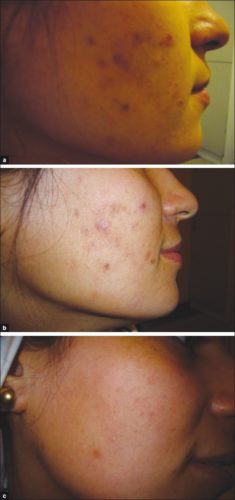
Top to bottom: Baseline, 6 weeks after and 10 weeks after red light therapy treatment for acne vulgaris.
Acne is the most widespread skin condition in the United States, affecting up to 50 million Americans annually.18 People react differently to the presence of acne on their face and body, but it often results in poor self-image, depression anxiety as well as permanent physical scarring on the skin.19
A 2001 experiment from Queens Medical Center in Nottingham, UK found that acne was prevalent in 50% of adolescents and had “considerable impact on emotional health in this age group.”20
Iranian scientists compared the effects of red (630nm) and infrared (890nm) laser therapy on 28 patients with facial acne in 2012. Participants in the study were given light therapy on their face 2-times per week for 6 weeks and their skin condition was assessed in the following weeks. Ten weeks after treatment acne lesions were found to be significantly decreased in those treated with the red light, but the decrease wasn’t significant with the infrared light.21
#4. Relieve Pain
 America is a nation in pain, according to a 2015 study by researchers at the National Institutes of Health.
America is a nation in pain, according to a 2015 study by researchers at the National Institutes of Health.
How much pain?
Nearly 50 million American adults (11.2%) reported experiencing pain daily for the previous three months.22
Some of the most common pain medications that people reach for when they are feeling pain are Tylenol, Ibuprofen or other NSAIDS, all of which (except aspirin) can cause heart attacks and strokes. In fact, in July 2015, the FDA issued a strong warning of heart attack and stroke for these common painkillers.23
In other words, people experiencing pain are using medications that are killing them. It’s clear that better treatments are needed – treatments like red light therapy. Here are the conclusions of a few recent publications on reducing pain with therapeutic red and infrared light:
- 2006 systematic review: “There is strong evidence that LLLT [low-level laser therapy] modulates the inflammatory process and relieves acute pain in the short-term.”24
- 2009 systematic review published in The Lancet: “We show that LLLT reduces pain immediately after treatment in acute neck pain and up to 22 weeks after completion of treatment in patients with chronic neck pain.”25
- 2014 review: “[red and infrared] Laser causes pain relief without any side effects.”26
#3. Regrow Hair on a Balding Scalp
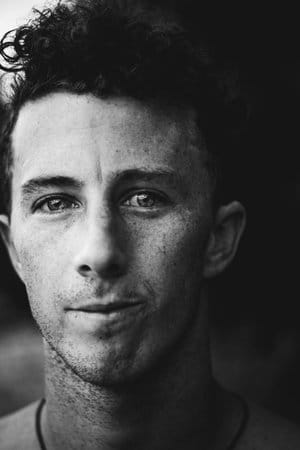 Hair loss (alopecia) is a very common disorder, affecting more than 50% of the worldwide population.27 In the United States, an estimated 35 million men and 21 million women suffer from some form of hair loss, and around 40% of men will have noticeable hair loss by the age 35.28
Hair loss (alopecia) is a very common disorder, affecting more than 50% of the worldwide population.27 In the United States, an estimated 35 million men and 21 million women suffer from some form of hair loss, and around 40% of men will have noticeable hair loss by the age 35.28
To date there are only two FDA-approved synthetic drugs that doctors can prescribe for hair loss: Propecia and Rogaine. Both of these drugs have a less than 50% success rate, and their side effects can be severe.29 Hair transplants are another option, but comes with a list of unwanted side effects including itching, pain, bleeding, swelling, infections, etc. and like the drug treatments, its efficacy is questionable.
“I only have to venture to a major street in San Francisco to find that if there were an “effective” treatment for baldness, a majority of men are either not aware of it, or are choosing to be bald,” writes hair loss researcher Danny Roddy.30
Red light therapy appears to be a safe and remarkably effective way to reverse hair loss and regrow hair on the balding scalps of men and women.
American and Hungarian researchers conducted a review in 2014 of studies involving the treatment of hair loss with red and infrared laser therapy. Their review reports that red and infrared laser therapies have been demonstrated to stimulate hair growth in both mice and in men and women in a number of controlled clinical trials. “LLLT for hair growth in both men and women appears to be both safe and effective. The optimum wavelength, coherence and dosimetric parameters remain to be determined,” they concluded.27
#2. Heal Arthritis
 Arthritis is a crippling ailment that many people suffer from worldwide. An estimated 22.7% of US adults had been told by their doctors between 2013-2015 that they had some form of arthritis – that’s almost 55 million people that could benefit from an effective treatment for the condition.31
Arthritis is a crippling ailment that many people suffer from worldwide. An estimated 22.7% of US adults had been told by their doctors between 2013-2015 that they had some form of arthritis – that’s almost 55 million people that could benefit from an effective treatment for the condition.31
There are dozens of different synthetic drugs FDA approved drugs for arthritis, all of which come with limited successes as well as their own set of unwanted side effects. Red light therapy has no side effects and can effectively treat arthritis, perhaps better than anything available.
Dr. Michael R. Hamblin, Harvard professor from the Department of Dermatology, published a study in 2013 titled Can Osteoarthritis Be Treated with Light? that experimented with the application of infrared laser light (810nm). Remarkably, after inducing arthritis in the rats and treating them just one time with the infrared laser, inflammation was found to be significantly reduced just 24 hours later. “A single application of LLLT produced significant reductions in inflammatory cell infiltration and inflammatory cytokines 24 hours later.”32
#1. Heal Cancer
Here we are at the final and perhaps most amazing benefit of red light therapy.
Since red and infrared light therapy cannot be patented, the medical industry had to invent their own version that they call Photodynamic Therapy, which is expensive and involves the administration of highly toxic photosensitizing drugs, which in combination with red light are said to kill cancer cells. Despite the administration of poison along with the red light, the results of this therapy have proven it to be effective.33
However, once one understands that cancer is simply a collection of metabolically defective cells and not some blood-thirsty ‘terrorist’ monster that’s trying to kill the patient, it becomes obvious that the addition of toxic drugs to the red light is not likely providing any additional benefit. Let me break this one down for you:
Every cell in your body needs to produce energy to survive. A healthy cell will undergo oxidative phosphorylation (don’t be put off by the complex word, I’ll keep this simple) which is a process involving a number of steps that are dependent on enzymes and result in the production of energy (ATP).
As German Nobel Prize Laureate Dr. Otto Warburg first discovered in the early 20th century, disruption of just one of the enzymes involved in metabolism – called cytochrome c oxidase – can cause a cell to turn ‘cancerous’ aka resort to an inefficient form of metabolism called glycolysis. Of course, Warburg’s discovery had been voraciously rejected by the medical establishment at the time.
However, in recent years, Warburg’s finding has been successfully replicated by a number of researchers, confirming Warburg’s finding that a defect in the function of that single enzyme can cause a metabolic shift into what we call a ‘cancer cell’.34
As I wrote in my book Cancer Cured: Victory Over the War on Cancer, “A number of chemical toxins have been shown to inhibit cytochrome c oxidase activity; for example, chemotherapy,267 cyanide,268-270 carbon monoxide,271,272 aluminum phosphide,273 estrogen,274…”
Remarkably, the cytochrome c oxidase enzyme absorbs light in the red and infrared spectrums, which then amplifies its activity. So by applying red or infrared light to a cell that is lacking the cytochrome c oxidase enzyme (cancer), efficient cellular metabolism (oxidative phosphorylation) is restored and that cancer cell will revert right back to a normal, healthy functioning cell.35,36
Select You Red Light Therapy Device
- STORE -
THE FUTURE OF MEDICINE
The most advanced healing technologies and products for your metabolism in the world - at a discount!
Already signed up? Check your email!
Links to your Insider deals are at the bottom of every email.
METHYLENE BLUE THERAPY:
RED LIGHT THERAPY
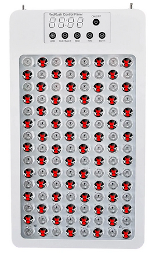
Red + Near-Infrared 360 Watt Device
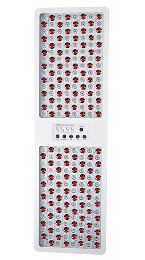
Red + Near-Infrared 720 Watt Device

Red + Near-Infrared 840 Watt Device PULSED
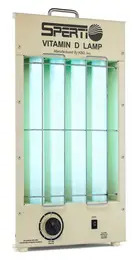
Vitamin D Ultraviolet Sunlamp
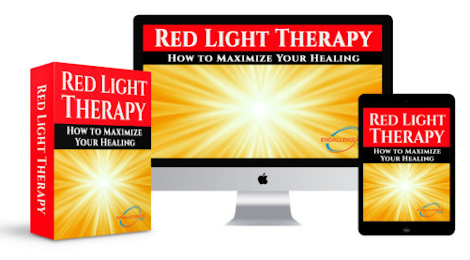
The World’s First Red Light Therapy Video Course by #1 Bestselling Author Mark Sloan
A $699 VALUE - FREE FOR INSIDERS!
BALNEOTHERAPY/WATER CURE THERAPY:
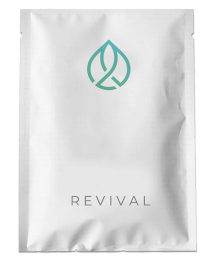
Premium Healing Bath Mix
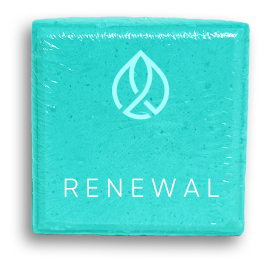
Ultimate 20-Minute Bath Bomb
HORMONE THERAPY:
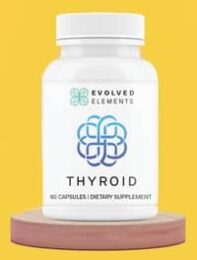
Thyroid Hormone (200mg)
CARBON DIOXIDE THERAPY:

BODYSTREAM CO2 INFUSION SUIT

CARBOGEN GENERATOR
#1 BESTSELLING BOOKS BY MARK SLOAN:
Learn more about the therapies above in my books below.
Summary
Red and infrared light therapies can safely and effectively accelerate wound healing, increase bone density, increase testosterone, enhance brain function, eliminate anxiety and depression, reduce acne, relieve pain, reverse hair loss, treat painful arthritis, and remedy the enzymatic dysfunction deemed by Nobel Prize-Winning Scientist Dr. Otto Warburg to be the root cause of cancer.
[ninja-inline id=44194]
Not a day goes by where my thoughts, passions and visions aren’t focused on creating you amazing content, improving the EndAllDisease website to enhance your experience and making the world a better place to live.
Donate to EndAllDisease and you can rest assured that you’ve done something good for all of humanity.
Don’t forget to share this article with your friends and family on facebook and write a comment below about how you have benefitted from infrared and red light therapies.
References
- NASA press release (2000). NASA Space Technology Shines Light on Healing. [Online]. Available: http://www.laserthera.com/press_release_3.htm [August 1st, 2017].
- Hopkins JT, Mcloda TA, Seegmiller JG, David baxter G. Low-Level Laser Therapy Facilitates Superficial Wound Healing in Humans: A Triple-Blind, Sham-Controlled Study. J Athl Train. 2004;39(3):223-229.
https://www.ncbi.nlm.nih.gov/pubmed/15496990 - Chaves ME de A, de Araújo AR, Piancastelli ACC, Pinotti M. Effects of low-power light therapy on wound healing: LASER x LED . Anais Brasileiros de Dermatologia. 2014;89(4):616-623.
https://www.ncbi.nlm.nih.gov/pmc/articles/PMC4148276/ - Barbosa D, De souza RA, Xavier M, Da silva FF, Arisawa EA, Villaverde AG. Effects of low-level laser therapy (LLLT) on bone repair in rats: optical densitometry analysis. Lasers Med Sci. 2013;28(2):651-6.
https://link.springer.com/article/10.1007/s10103-012-1125-0 - Pinheiro AL, Limeira júnior Fde A, Gerbi ME, Ramalho LM, Marzola C, Ponzi EA. Effect of low level laser therapy on the repair of bone defects grafted with inorganic bovine bone. Braz Dent J. 2003;14(3):177-81.
https://www.ncbi.nlm.nih.gov/pubmed/15057393 - Pinheiro AL, Gerbi ME. Photoengineering of bone repair processes. Photomed Laser Surg. 2006;24(2):169-78.
http://www.omegalaser.co.uk/pinheiro-gerbi - Blaya DS, Guimarães MB, Pozza DH, Weber JB, De oliveira MG. Histologic study of the effect of laser therapy on bone repair. J Contemp Dent Pract. 2008;9(6):41-8.
https://www.researchgate.net/profile/Joao_Weber/publication/23250489_Histologic_study_of_the_effect_of_laser_therapy_on_bone_repair/links/02bfe50da2ea71c650000000/Histologic-study-of-the-effect-of-laser-therapy-on-bone-repair.pdf - The Healthline Editorial Team, Gotter A and Rogers G, MD. Low Testosterone in Men. Healthline. Jul 2016.
https://www.healthline.com/health/side-effects-of-low-testosterone - Andre B. Araujo, Gretchen R. Esche, Varant Kupelian, Amy B. O’Donnell, Thomas G. Travison, Rachel E. Williams, Richard V. Clark, John B. McKinlay; Prevalence of Symptomatic Androgen Deficiency in Men, The Journal of Clinical Endocrinology & Metabolism, Volume 92, Issue 11, 1 November 2007, Pages 4241–4247.
https://www.ncbi.nlm.nih.gov/pubmed/17698901 - Ahn JC, Kim YH, Rhee CK. The effects of low level laser therapy (LLLT) on the testis in elevating serum testosterone level in rats. Biomed Res. 2013;24(1):28-32.
http://www.alliedacademies.org/articles/the-effects-of-low-level-laser-therapy-lllt-on-the-testis-in-elevatingserum-testosterone-level-in-rats.html - Barrett DW, Gonzalez-lima F. Transcranial infrared laser stimulation produces beneficial cognitive and emotional effects in humans. Neuroscience. 2013;230:13-23.
https://www.ncbi.nlm.nih.gov/pubmed/23200785 - Hwang J, Castelli DM, Gonzalez-lima F. Cognitive enhancement by transcranial laser stimulation and acute aerobic exercise. Lasers Med Sci. 2016;31(6):1151-60.
https://link.springer.com/article/10.1007/s10103-016-1962-3 - Reddy MS. Depression: the disorder and the burden. Indian J Psychol Med. 2010;32(1):1-2.
https://www.ncbi.nlm.nih.gov/pmc/articles/PMC3137804/ - Ibrahim AK, Kelly SJ, Adams CE, Glazebrook C. A systematic review of studies of depression prevalence in university students. J Psychiatr Res. 2013;47(3):391-400.
https://www.sciencedirect.com/science/article/pii/S0022395612003573 - Facts & Statistics. Anxiety and Depression Association of America. [Online]. Available: https://adaa.org/about-adaa/press-room/facts-statistics [August 1, 2017].
- Weissman JD, Russel D, Jay M, Beasley JM, Malaspina D, Pegus C. Disparities in Health Care Utilization and Functional Limitations Among Adults with Serious Psychological Distress, 2006-2014. Psych. Serv. 2016;68(7):653-659.
https://ps.psychiatryonline.org/doi/abs/10.1176/appi.ps.201600260?code=ps-site&journalCode=ps - Schiffer F, Johnston AL, Ravichandran C, et al. Psychological benefits 2 and 4 weeks after a single treatment with near infrared light to the forehead: a pilot study of 10 patients with major depression and anxiety. Behav Brain Funct. 2009;5:46.
https://behavioralandbrainfunctions.biomedcentral.com/articles/10.1186/1744-9081-5-46 - Bickers DR, Lim HW, Margolis D, Weinstock MA, Goodman C, Faulkner E et al. The burden of skin diseases: 2004 a joint project of the American Academy of Dermatology Association and the Society for Investigative Dermatology.Journal of the American Academy of Dermatology 2006;55:490-500.
https://www.sciencedirect.com/science/article/pii/S0190962206015209 - Strauss JS, Krowchuk DP, Leyden JJ, Lucky AW, Shalita AR, Siegfried EC et al. Guidelines of care for acne vulgaris management. Journal of the American Academy of Dermatology 2007;56:651-63.
http://www.jaad.org/article/S0190-9622(15)02614-6/pdf - Smithard A, Glazebrook C, Williams HC. Acne prevalence, knowledge about acne and psychological morbidity in mid-adolescence: a community-based study. Br J Dermatol. 2001;145(2):274-9.
http://onlinelibrary.wiley.com/doi/10.1046/j.1365-2133.2001.04346.x/full - Aziz-jalali MH, Tabaie SM, Djavid GE. Comparison of Red and Infrared Low-level Laser Therapy in the Treatment of Acne Vulgaris. Indian J Dermatol. 2012;57(2):128-30.
https://www.ncbi.nlm.nih.gov/pubmed/22615511 - Richard L. Nahin. Estimates of Pain Prevalence and Severity in Adults: United States, 2012. The Journal of Pain, 2015; 16 (8): 769.
https://www.sciencedirect.com/science/article/pii/S1526590015006793 - FDA Drug Safety Communication: FDA strengthens warning that non-aspirin nonsteroidal anti-inflammatory drugs (NSAIDs) can cause heart attacks or strokes. 2015. Available: https://www.fda.gov/Drugs/DrugSafety/ucm451800.htm [August 10, 2017].
- Bjordal JM, Johnson MI, Iversen V, Aimbire F, Lopes-martins RA. Low-level laser therapy in acute pain: a systematic review of possible mechanisms of action and clinical effects in randomized placebo-controlled trials. Photomed Laser Surg. 2006;24(2):158-68.
http://www.lasertherapyu.org/research/lowlevel-laser-therapy-in-acute-pain - Chow RT, Johnson MI, Lopes-martins RA, Bjordal JM. Efficacy of low-level laser therapy in the management of neck pain: a systematic review and meta-analysis of randomised placebo or active-treatment controlled trials. Lancet. 2009;374(9705):1897-908.
https://www.ncbi.nlm.nih.gov/pubmed/19913903 - Falaki F, Nejat AH, Dalirsani Z. The Effect of Low-level Laser Therapy on Trigeminal Neuralgia: A Review of Literature. J Dent Res Dent Clin Dent Prospects. 2014;8(1):1-5.
https://www.ncbi.nlm.nih.gov/pmc/articles/PMC4091693/ - Avci P, Gupta GK, Clark J, Wikonkal N, Hamblin MR. Low-level laser (light) therapy (LLLT) for treatment of hair loss. Lasers Surg Med. 2014;46(2):144-51.
http://onlinelibrary.wiley.com/doi/10.1002/lsm.22170/abstract - Statistic Brain. Hair Loss Statistics. 2016. Available: http://www.statisticbrain.com/hair-loss-statistics [August 20th, 2017].
- Jain, R. et al. Potential targets in the discovery of new hair growth promoters for androgenic alopecia. July 2014, Vol. 18, No. 7 , Pages 787-806.
https://www.readbyqxmd.com/read/24873677/potential-targets-in-the-discovery-of-new-hair-growth-promoters-for-androgenic-alopecia - Danny Roddy. 2014. Hair Like a Fox: A bioenergetics view of pattern h air loss frequently asked questions. Available: http://www.dannyroddy.com/weblog/hairlikeafoxfaq [August 25, 2017].
- Arthritis-Related Statistics. Centers for disease Control and Prevention. Available: https://www.cdc.gov/arthritis/data_statistics/arthritis-related-stats.htm [August 20, 2017].
- Hamblin MR. Can osteoarthritis be treated with light? Arthritis Res. & Ther. 2013;15:120.
https://arthritis-research.biomedcentral.com/articles/10.1186/ar4354 - Agostinis P, Berg K, Cengel KA, et al. Photodynamic therapy of cancer: an update. CA Cancer J Clin. 2011;61(4):250-81.
https://www.ncbi.nlm.nih.gov/pmc/articles/PMC3209659/ - Srinivasan S, Guha M, Dong DW, et al. Disruption of cytochrome c oxidase function induces the Warburg effect and metabolic reprogramming. Oncogene. 2016;35(12):1585-95.
https://www.ncbi.nlm.nih.gov/pmc/articles/PMC4703574/ - Brown GC, Borutaite V. Nitric oxide, cytochrome c and mitochondria. Biochem Soc Symp. 1999;66:17-25.
http://symposia.biochemistry.org/content/66/17 - Hamblin M. The role of nitric oxide in low level light therapy. 2008;6846.
http://www.spie.org/Publications/Proceedings/Paper/10.1117/12.764918





